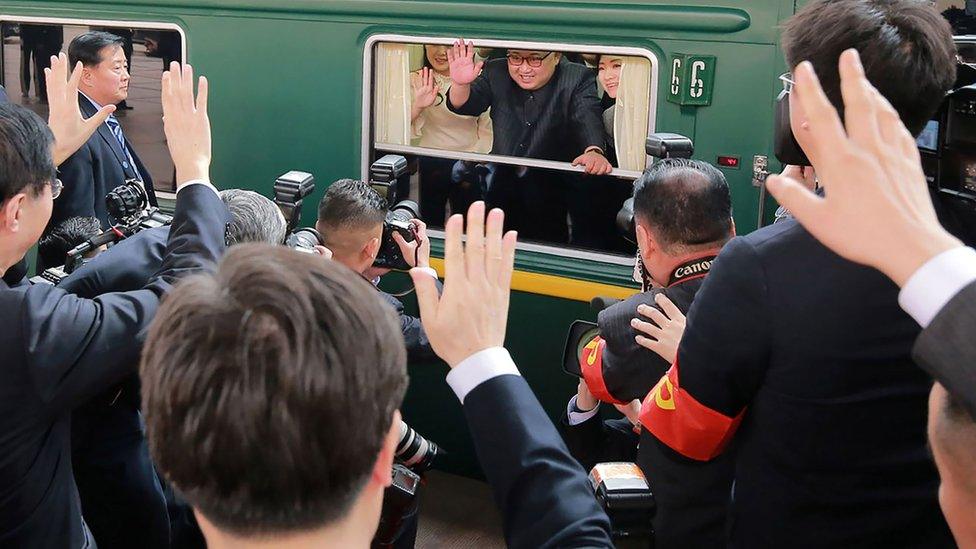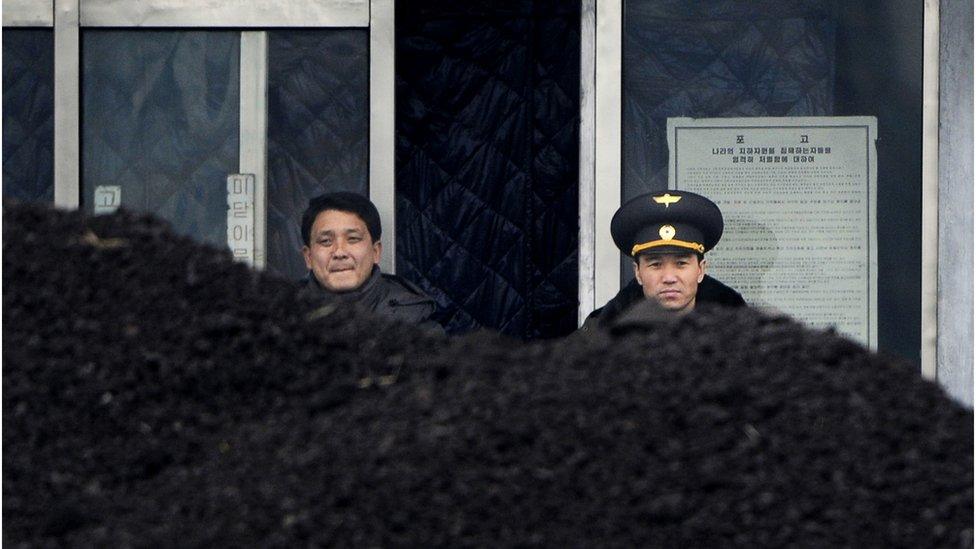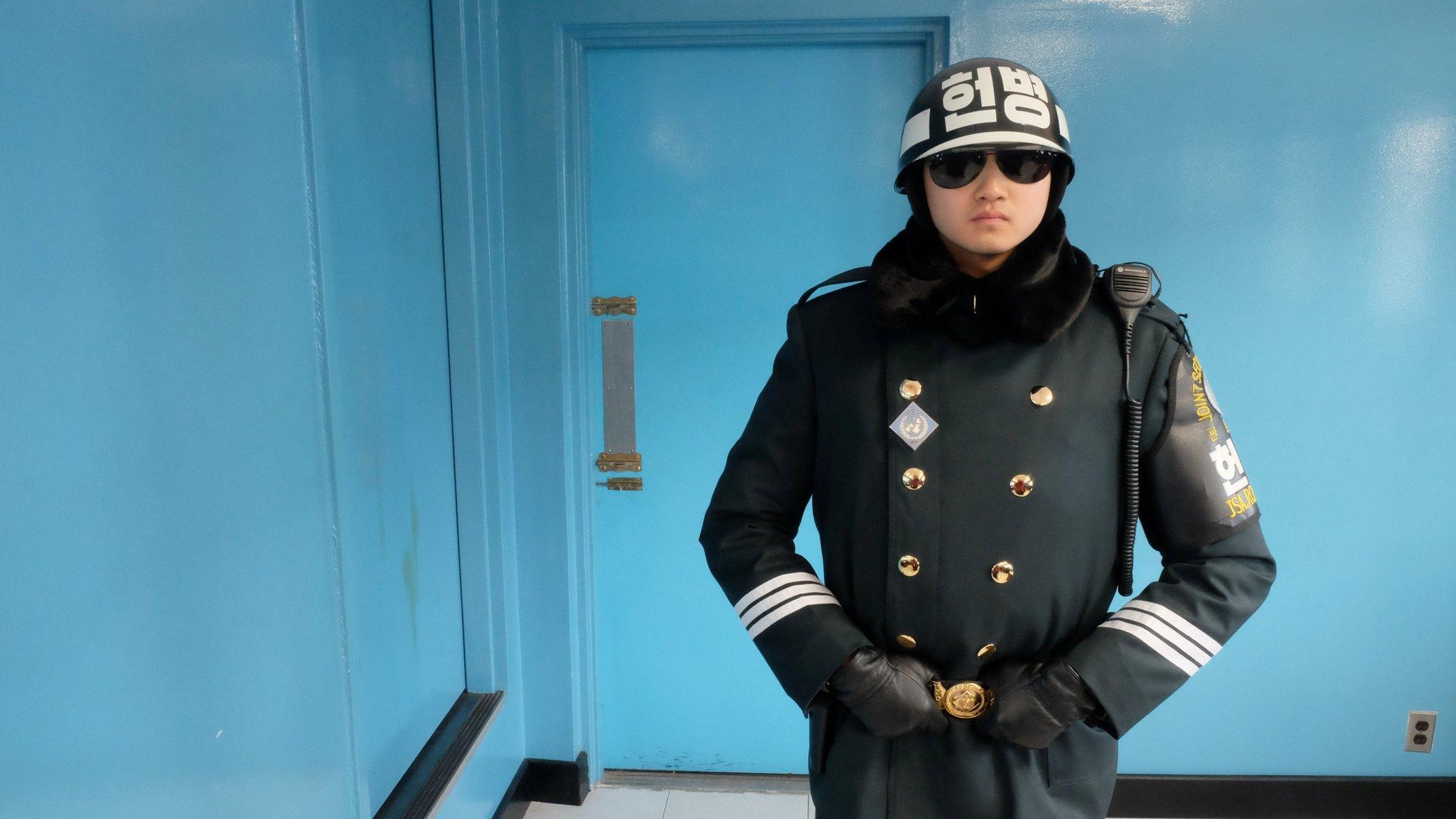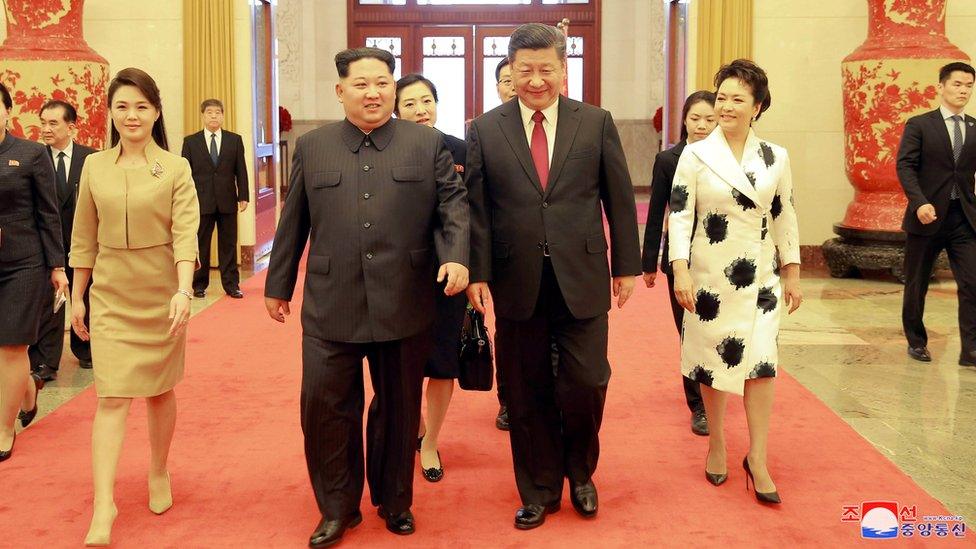Kim Jong-un visit: What else crosses the China-North Korea border?
- Published

Kim Jong-un's recent visit to Beijing was the North Korean leader's first trip across the Chinese border since coming to power in 2011.
That border with China is one of the main ways North Korea interacts with the outside world.
Reality Check looks at what we know about the people and goods that cross it.
Trains
Mr Kim arrived in Beijing this week on a similar train to the one used by his father, Kim Jong-il.
A Russian emissary who travelled on that train in 2001 immortalised it in a memoir, external, describing live lobsters being airlifted to it every day, silver chopsticks, and a parade of beautiful female companions.
But there is a regular, decidedly less decadent, train service that runs between Beijing and Pyongyang four times a week.

The K27/K28 train route, external goes via Chinese cities such as Tianjin and the border city of Dandong, before crossing the Sino-Korean Bridge of Friendship into North Korea.
Simon Cockerell, the general manager of Koryo Tours, a travel company specialising in trips to North Korea, says the number of passengers every year "is easily in the tens of thousands."
Each Beijing-Pyongyang train can carry up to 96 passengers.
And there is a daily train from Dandong to Pyongyang, which can carry between 50 and 150.
People
The number of North Korean visitors to China has increased fairly steadily over the past two decades.
In 2016, 210,000 North Koreans visited China, according to the China National Tourism Administration (CNTA).

There is a significant gender disparity - for example, in 2015, 84% of trips were made by men.
There are caveats around these figures. The website North Korea in the World, external warns that they will certainly not account for all visitors (for example, those on undocumented short trips) and that some North Koreans may travel across the border frequently and so will appear in the figures multiple times.
And of course, it doesn't take into account the number of defectors, most of whom leave North Korea over the Chinese border. The South Korean government says 1,127 defectors arrived in 2017, external - but the numbers of those who pass into China are almost certainly higher given some may remain there.

North Korean hostesses wait for customers at the entrance to a restaurant in the Chinese border city of Dandong.
According to the CNTA, most trips to China are by overseas workers - 94,000 in 2015.
There is no set figure for how many North Koreans work overseas around the world - organisations give estimates ranging from 50,000 to 100,000., external
The most high-profile of these are the women who work in North Korean restaurants - mostly in China, but also in Russia and other countries. However, most are believed to work in the mining, textile and construction industries.
In the past, concerns have been raised by the UN over the conditions some work in.
The number of North Korean students in China is also unknown, but is believed to be in the thousands. A Washington Post investigation, external found that 1,086 North Korean postgraduates studied in China in 2015.
Likewise, statistics for the numbers of Chinese visitors into North Korea are difficult to come by. In 2012, the government said there had been 234,000 Chinese tourists, external, but it has not released statistics since and in fact seems to have removed the 2012 figures from online.
Goods
There is one thing experts agree on: North Korea does most of its trade with China. By some estimates, it's more than 90%.
But they weren't always so closely aligned. In 2000, data collected by the Korea Trade Investment Promotion Agency (Kotra), a South Korean trade body, put China's share of North Korean trade at only 25%.
According to Kotra, trade between China and North Korea was worth just over $5bn in 2017. This figure includes an estimated $280m in unreported crude oil exports from China. Total trade was almost $7bn in 2014.
The full effect of UN sanctions, which started to get tougher from 2016 as North Korea continued to develop its nuclear capabilities, is still yet to be seen, as is their impact on the value of North Korean imports and exports with China.
There is a lot the data can't capture, such as the value of informal business deals that take place across the border, or smuggling of illicit goods. Then there's the lack of statistics from North Korea.

What is North Korea importing?
The largest imports are crude oil and refined petroleum, although UN sanctions have imposed a limit on the amount that can be supplied by China. Other goods include machinery, electronics, textiles and lorries. Last year a Chinese shipping company was accused of smuggling banned luxury goods to North Korea.
The luxury goods sanctioned by the UN include:
Rugs and tapestries
Porcelain or bone china tableware
Snowmobiles, yachts and racing cars
As well as trade, China has been the main supplier of food aid to North Korea.

Two North Korean men stand behind a pile of coal along the banks of the Yalu River in the North Korean border town of Siniuju
What is North Korea exporting to China?
Going in the other direction, coal has been the most valuable export to China - worth more than $1bn in 2016. Other exports include iron, seafood and clothing. In August 2017, China announced a ban on coal, iron, iron ore and seafood, in line with UN sanctions.
Since the ban was imposed, the UN's panel of experts has investigated several cases of coal shipments that continue to be delivered to China, as well as to other countries. The panel found that North Koreans were using tactics to hide their activities.
They include manipulating ship identification signals, taking detours, false documents and loitering, all to "give the impression that the coal was loaded in ports other than in the Democratic People's Republic of Korea".



- Published29 March 2018

- Published28 March 2018

- Published28 March 2018
